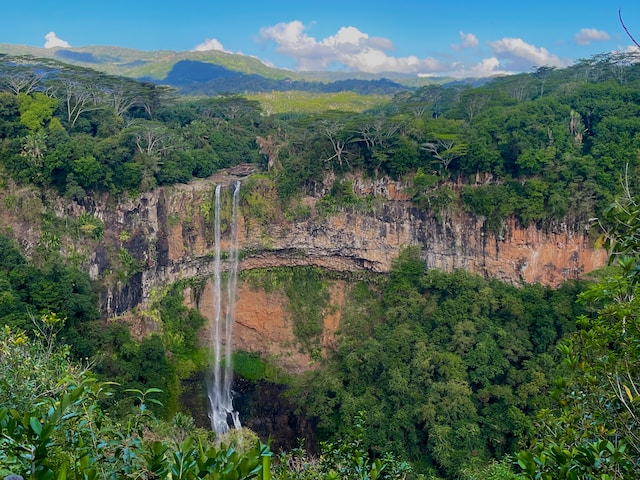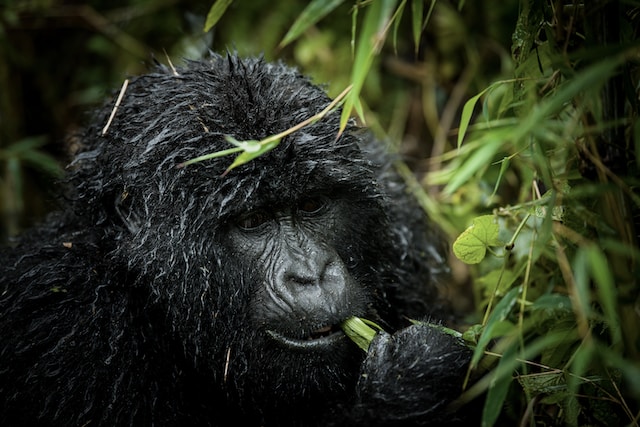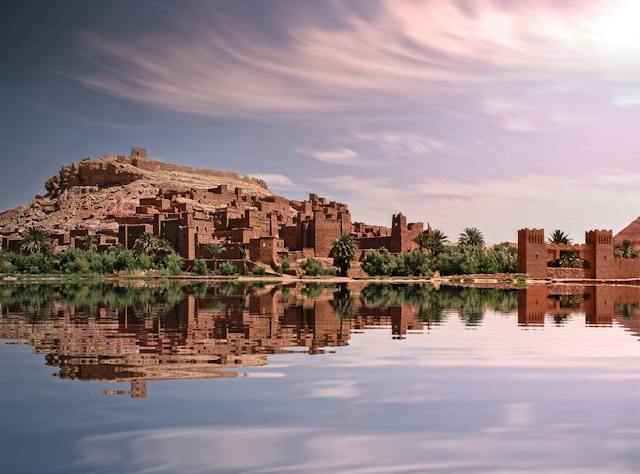You have likely heard about the seven natural wonders of Africa – the iconic classics that drive crowds to this diverse continent. But have you heard about the weirdest natural wonders of Africa?
These are some of the most bizarre attractions off the radar. They are lesser-known wonders of nature in remote locations, away from tourist crowds.
In its own unique way, each of these marvels tells a story about the extraordinary processes that shape the earth. They collectively offer valuable insights into the history of our planet and the constant changes taking place behind the scenes.
If you find unusual landscapes and extraordinary formations intriguing, journey with us through these unusual hidden gems:
Coloured Dunes of Chamarel, Mauritius
One of the most artistic natural formations in the world is also among the weirdest natural wonders of Africa. The seven coloured earths in Mauritius is a rainbow landscape on the sand dunes of Chamarel Plain. These dunes consist of a blend of sand, clay and volcanic ash. They are rich in rare minerals ranging from iron and aluminum to copper, magnesium, sulphur and calcium. Exposure to moisture and heat as well as weathering processes cause chemical reactions that create the mesmerizing colours. These range from red, brown and yellow to green, blue, purple and violet.
Here is the weirdest thing about this landscape. If you mix samples from the different layers of coloured sand, they naturally separate and rearrange themselves by colour. This is because the elements present in the layers naturally repel each other. These colours are resistant to erosion and weather and continue to stand the test of time.
The Chamarel Geopark is also home to the breathtaking Chamarel waterfall. While you are in Mauritius, make a point to visit the underwater waterfall, one of its weird water destinations.

The Red Tsingy and Tsingy de Bemaraha, Madagascar
The tsingy of Madagascar are towering peaks of limestone needles popularly referred to as stone forests. In the language of Malagasy, “tsingy” means “where one cannot walk barefoot.” These formations are the product of millions of years of erosion on limestone landscapes. Geologists attribute their intricate sculpting to the forces of acidic rainwater.
The Tsingy de Bemaraha is the largest of its kind anywhere in the world. In this otherworldly landscape, you will find tall pinnacles of up to 328 meters (1,000ft+). Together, the razor-sharp spires form a complex maze with narrow trails in between the towers. Beneath them are caverns, canyons and crevasses, similarly carved into the ground by acidic rainwater. Above, there are high plateaus and ridges with jagged edges. If you love a rock-climbing challenge, you will find the most rewarding views of the landscape from the top of these pinnacles. Surprisingly, vegetation grows in the cracks and fissures on the ground. The spot is home to various lemurs, reptiles and bird species.
While the typical tsingy consists of gray limestone spires, the Red Tsingy stands out for its vibrant red hue. Unlike the grey tsingy, the red variation is made of laterite, not limestone. Laterite has a high level of iron oxide, which gives the rocks their iconic reddish tint. This variation wears away with time due to erosion; but new spires keep appearing to replace those lost to the earth.
Tundavala Gap, Angola
Among the weirdest natural wonders of Africa, the Tundavala Gap in Angola reigns supreme. It is a breathtaking chasm on the rim of the Serra de Leba Mountain Range. One moment, you are on a 2,200-meter-high plateau; the next moment, the ground makes way for an abrupt 1,000-meter drop off. The result is a gaping chasm between mountains, as if someone sliced out a chunk of it.
The thought of peeking down into the abyss from this height induces vertigo even in the most fearless adventurers. From this elevated point you get spectacular views of the Atlantic Ocean and the Angola Plateau. It also offers a remarkable sunrise and sunset view. Anyone who has a soft spot for mountain adventures will certainly love a hike through this region.
Eye of the Sahara (Richat Structure/Guelb er Richat), Mauritania
If the earth had a bullseye, the eye of the Sahara would be it. Located deep in the Adrar Plateau, this is not just one of the weirdest natural wonders of Africa. It is also among the most mind-boggling natural formations on earth.
It spans a diameter of about 40 kilometers (30 miles) and has a series of concentric rings. Each of these rings has a different type of rock and varies in age. Some of the rock types exposed here include shale, limestone and sandstone.
When geologists first spotted it, they thought it was the result of a meteorite impact. However, research later attributed it to a combination of volcanic activity, tectonic movement and erosion. The area reportedly experienced an uplift. Erosion subsequently exposed the rings of different rock layers. The different rock types erode at different rates – hence the varying colours. It is difficult to experience the true grandeur of this natural feature from the ground. An aerial tour of the landscape is more fitting.
Blyde River Canyon (Motlatse Canyon), South Africa

As the largest green canyon on the globe, it is no surprise that this is among the weirdest natural wonders of Africa. Blyde River Canyon is about 25 kilometers (16 miles) long and has a depth of 750 meters (2,460ft). The highest peak however rises to 1,944 meters (6,378ft) offering a panoramic view of the Drakensberg escarpment.
It is a world of artistic contrasts, nature’s own masterpiece. Located in Mpumalanga, South Africa, it begins at the meeting point of two rivers, Treur (sorrow) and Blyde (joy). Unlike most canyons around the world, it is a lush, green landscape covering cliffs of red sandstone.
The area is home to multiple bizarre natural formations that further add to its allure. The Three Rondavels are massive, round outcrops of quartzite and shale. They resemble traditional African huts, known as “rondavels” in Afrikaans. The tallest of these towering outcrops rise to a height of 700 meters (2,300ft). Bourke’s Luck Potholes on the other hand are cylindrical cavities whose walls have colourful bands of sedimentary rock. They are the product of whirlpools where the Blyde River meets the Treur River.
Another great spot here is God’s Window – a viewpoint overlooking the Drakensberg Escarpment. Why the name? Because it offers some of the most spectacular views of the stunning landscape. Moreover, the high vantage point is often covered in clouds and mist – like a window from heaven.
Here are some hidden canyons to explore in the US.
Bwindi Impenetrable Forest, Uganda

Everything about this natural attraction – its name, its age, the biodiversity and its native residents – spells mystery. As one of the weirdest natural wonders of Africa, it is on the list of UNESCO World Heritage Sites. Research estimates its rainforests to be about 25,000 years old. Not surprisingly, it has over 160 tree species, some ancient. The high density of vegetation and thick undergrowth is part of the reason behind the name.
Bwindi is home to many rare animals of Africa, such as the mountain gorilla. About 50% of the remaining population of these mysterious primates lives here. There are 350 bird species in the forest, 14 of which you will not find anywhere else on earth. Some of the endangered birds found here include Grauer’s Broadbill, Chapin’s Flycatcher and Shelley’s Crimson.
A tour of Bwindi includes a cultural experience where you get to meet the Batwa people – the “keepers of the forest.” They have been a part of this forest since time immemorial, existing in harmony with nature. As hunters and gatherers, they depend on the forest for food and medicine from its ancient flora.
See Nature at its Best in the Unusual Attractions of Africa
These are just some of the weirdest natural wonders of Africa that you can explore without running into crowds of tourists. Africa is full of fascinating mysteries for nature lovers, some of which are still subjects of research. If you are looking for an off-the-radar adventure or a once-in-a-lifetime trip, you cannot go wrong with these. Add these peculiar spots to your bucket list to see the incredible diversity and power of nature at its best.
If you love the extraordinary, explore the most bizarre natural wonders of Asia and the nature’s weirdest attractions in Europe too.

